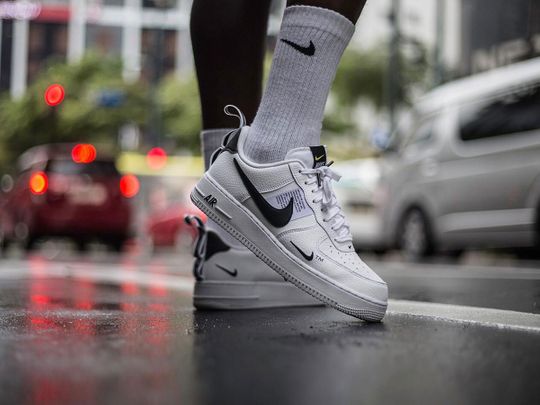
Nike Inc. shares slumped after inventory surged and the sportswear giant was forced to push through margin-busting discounts that hurt profitability.
Higher freight costs, markdowns and foreign-exchange effects weighed on profitability in the fiscal first quarter ended Aug. 31, with gross margin of 44.3 per cent coming in below Wall Street's expectations. North American inventories surged 65%, and the footwear giant also downgraded its outlook for the full year on Thursday.
The shares fell 8.9 per cent in pre-market trading in New York, after dropping 43 per cent this year through Thursday's close. Concern about a lack of pricing power weighed on rivals in Europe Friday, with Adidas AG shares dropping as much as 4.4 per cent and Puma SE declining as much as 5.3 per cent.
"We are taking decisive action to clear excess inventory," Nike Chief Financial Officer Matt Friend said on a call with analysts. He said this is expected to have "a transitory impact on gross margins this fiscal year," but added that "this cost will be far outweighed by the benefit of clearing marketplace capacity."
Nike is the latest company to grapple with an increasingly complex economic panorama that began with supply-chain delays and port congestion. By the time companies were able to get supplies to store shelves, demand shifted as stubbornly high inflation erodes some consumers' purchasing power. In Nike's case, shipping woes caused a surge in out-of-season merchandise. On top of this, the dollar's relentless rise has crimped results from other countries.
The company now sees gross margin falling 200 to 250 basis points this fiscal year - versus a previous forecast that the gauge of profitability would be flat or decline as much as 50 basis points. The margin erosion is expected to be particularly steep in the company's second quarter. While full-year sales are still expected to grow in a low double-digit range when adjusting for currency, real expansion is now seen in a range of low to mid-single digits.
Nike in particular has struggled to resolve logistics issues stemming from port congestion and shipping logjams. Overall inventory rose 44 per cent in the most recent quarter compared to the prior year. The amount of merchandise in transit also spiked, even though executives noted that shipping times are improving.
China Results
China, which has seen its Covid Zero policy weigh on the economy, represents another headache. Nike said sales fell 16 per cent in its Greater China region in the quarter.
Despite volatile demand, executives have said they still see the country as a long-term growth market and have pledged to continue pumping investment into the region.
Chief Executive Officer John Donahoe said Chinese consumers are emerging from pandemic restrictions with an appetite to spend and the company expects results to start improving. He added that North America demand also is robust. First-quarter sales in Nike's home region beat analysts' estimates.
Globally, sales rose 10 per cent on a currency-neutral basis in the period. Total revenue was $12.7 billion, above analysts' average estimate of $12.3 billion, but those sales were less profitable amid markdowns. Earnings per share missed expectations.












